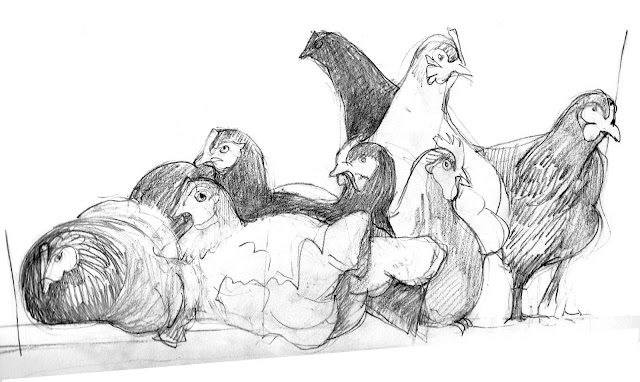Last week while enjoying fine weather and painting at Maudsley State Park with fellow Newburyport Ten Plein Air Painters, a rather large beetle fell onto my painting palette. While painting outdoors I'm
often bothered by small flying insects buzzing around my head which then get stuck on my canvass in the goo of my paints; gnats, mosquitoes, no seeums. This insect made me take notice because it was rather large with curved spotted antennas. It looked like the invasive Asian Long Horn Beetle I have read about in the newspapers.
Pinched between my painted gloved fingers I marched into the Park Office and presented my hard shelled offender to the Ranger. "Could this be the most wanted insect?" The Ranger would let me know when he found his identification card. Of course when he opened his hand where I had placed the bug for safe keeping, the insect,
a flying insect, flew to parts unknown in his office.
I stood there with my mouth open. "OK! I'll just return to my easel where I can be more productive and you can let me know what creature landed on my palette. See ya!"
So here is the dilemma. Without the culprit in hand, identifying it properly would be very difficult. When the Ranger contacted the MA Forestry Department, the office informed him the Asian Long Horn Beetle has a look-a-like called the Pine Sawyer and the chances were I found a Sawyer.
 |
| Asian Long Horn Beetle |
I do hope the Ranger found that beetle in his office because I was standing under a canopy of oak trees not pine trees. This non-native wood boring beetle is a real threat to our native trees. Once the infestation has been identified, the infected and nearby uninfected trees are clear cut and removed, a travesty to many neighborhoods. I was informed the Forestry Department would be sending someone out to inspect the trees. It is that important.
I do hope when I return to the State Park in the future, those beautiful trees will be still standing tall to inspire me and others to paint outdoors under the coolness of their shade.
 |
| Northeast Pine Sawyer |
To learn more about the Asian Long Horn Beetle go to:
http://www.smithsonianmag.com/science-nature/invasion-of-the-longhorn-beetles-145061504/?no-ist
























